COVID-19 India-Timeline an understanding across States and Union Territories
Extended INDSCI-SIM Omicron Predictions (Last Updated: January 10th, 2022)
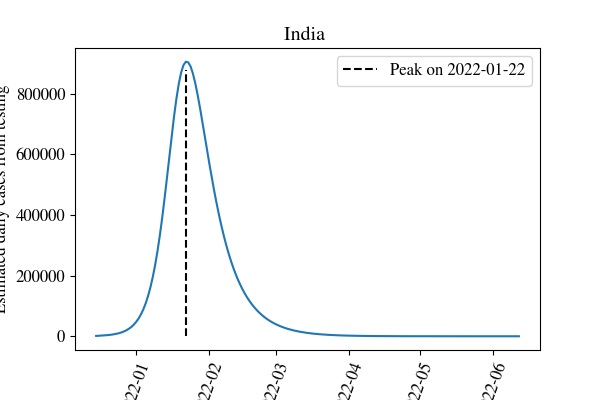
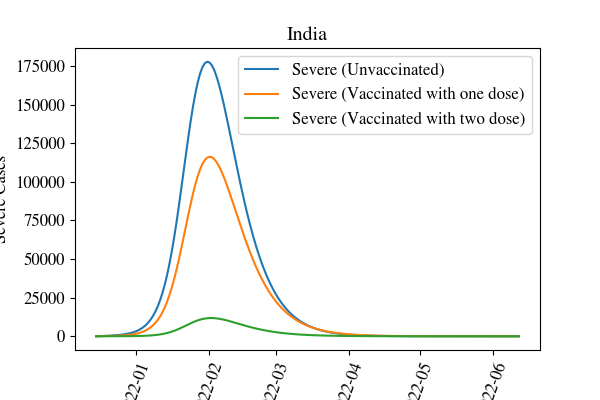
Developed by Farhina Mozaffer (IMSc Chennai) and Gautam I Menon (Ashoka University and IMSc Chennai) , with inputs from Philip Cherian, Brian Wahl, Sandeep Krishna and Vaiubhhav Sinha, extending the earlier INDSCI-SIM model (see https://www.medrxiv.org/content/10.1101/2021.06.02.21258203v1).
The model we use is an extension of the INDSCI-SIM model, which we
augment with compartments describing the effects of two doses of
vaccination, as shown below. The compartmental model that is shown
describes our model in detail. All compartments are age-stratified in
10-year bands, i.e. 0-9, 10-19 etc.


- Contact Structures Our model includes contact structures provided by the model of Jit and collaborators for India. We assume the following multipliers for contacts for India: Work =1, Home =1, School = 0.5, Other = 1. The age structure we use is as appropriate for each state. If data is not available, we use Andhra Pradesh as an exemplar. We first fit the growth rate for Omicron through comparison to the South African epidemic. These give us estimates for the daily case counts as well as daily hospitalisations.
- We then use these numbers for each Indian state making the following
assumptions
- We initialise our simulations with a small number of cases 2 weeks before the exponential rise in observed cases is initiated. Thus we have a different starting point for each state.
- We assume a constant multiplier of 15 between observed and actual cases, as is obtained for the state of Andhra Pradesh from the INDSCI-SIM calculations for the first wave. We believe this should be roughly accurate for the southern states, but may be in error for the larger northern states.
- We compute both numbers of tested infections as well as serious cases, by summing up numbers in the Infected Serious (IS) compartments in the first unvaccinated category as well as the severe infections in the vaccinated categories i.e. the V1S and the V2S categories.
- We assume a protective level of vaccinations that treats one dose and two doses differentially. Our numbers are benchmarked against South African data, assuming that about 16% of severe cases come from those vaccinated while 84% are from those unvaccinated.
- We use the ICMR serosurvey data as an approximate guide to extrapolating current levels of seroprevalence.
- We account for past vaccinations by populating the V1 and V2 susceptible compartments in accordance with population vaccination fractions for the first dose and the second dose
- We take 20% of the recovered unvaccinated population, assuming that the effects of a prior infection are equivalent to that of a single vaccination, and move them to the V1 compartment, from where they can be infected.
- We simulate the ongoing vaccination program as well.
Our calculations thus incorporate (i) a state-appropriate population distribution (ii) contact structures appropriate to India (iii) benchmarked numbers from the INDSCI-SIM model for the first wave (iv) extrapolated seroprevalence numbers from the ICMR serosurvey (v) the protective effects of one and two vaccine doses and (vi) the protective effects of a prior infection. This is the most detailed compartmental model currently available for COVID-19 in India.
The model can be improved as more data is available.
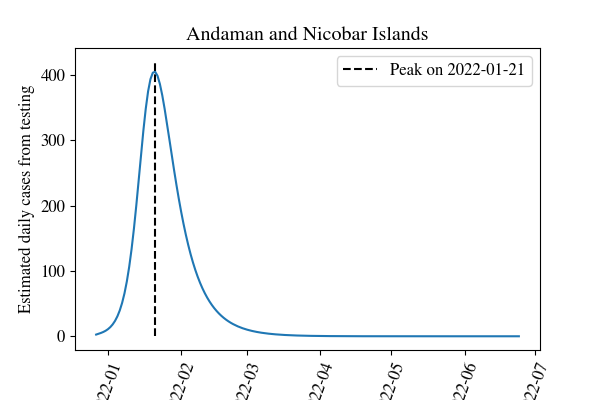
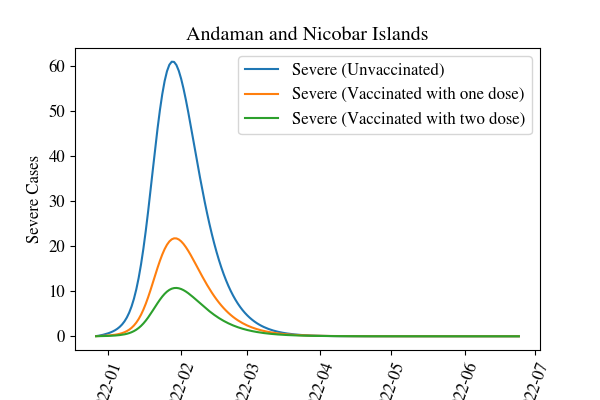
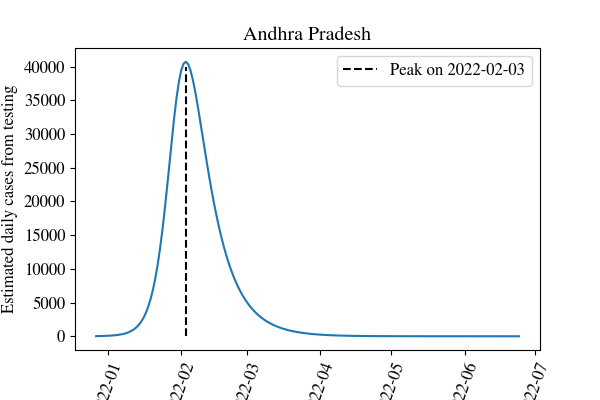
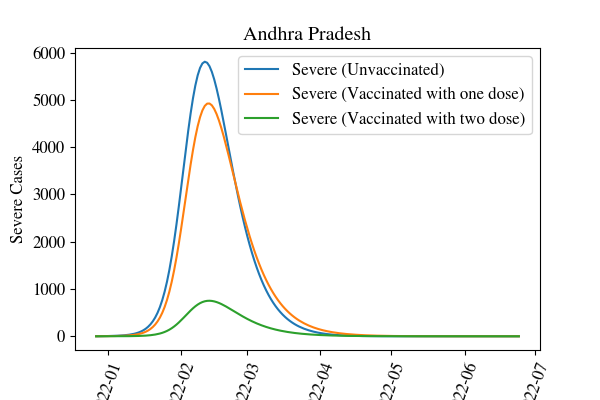
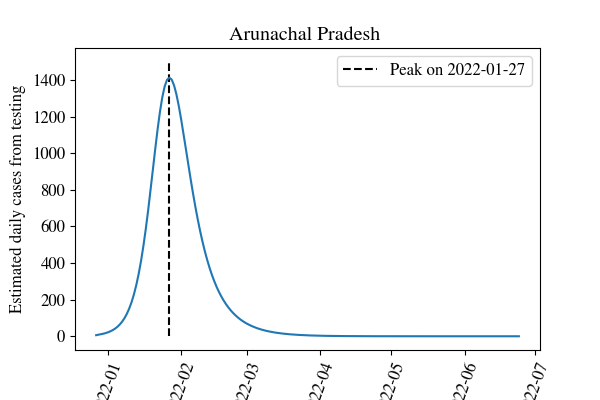
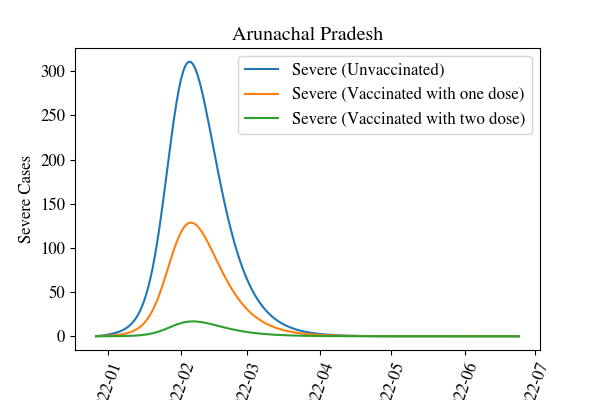
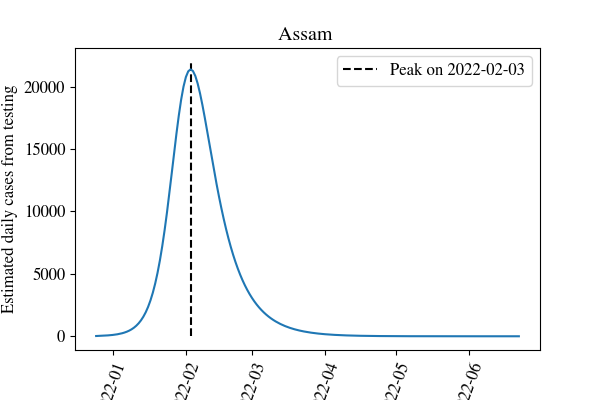
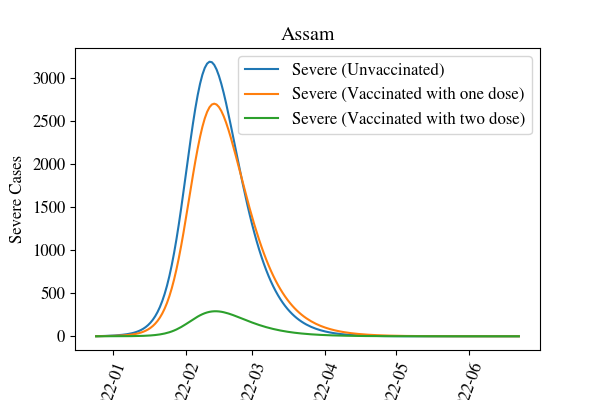
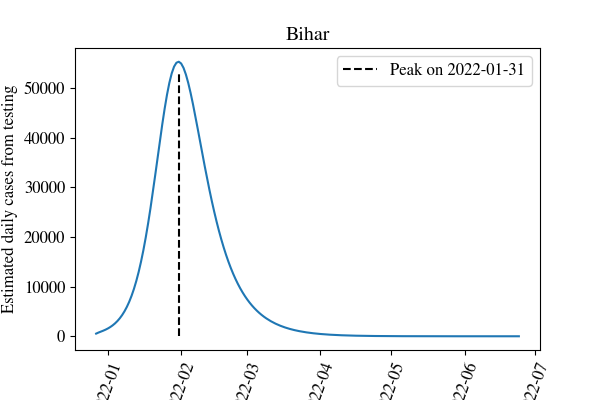
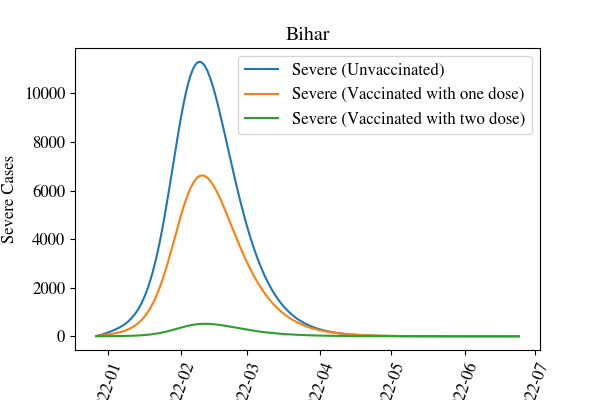
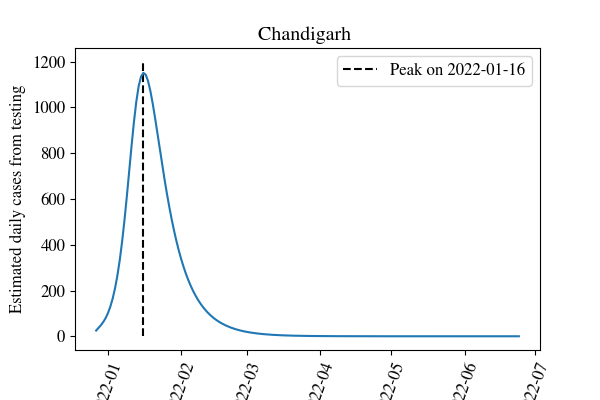
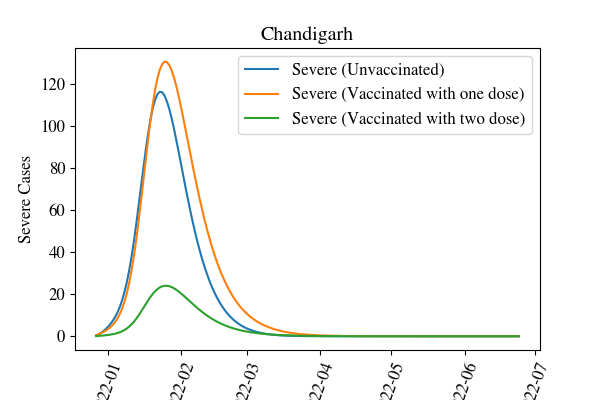
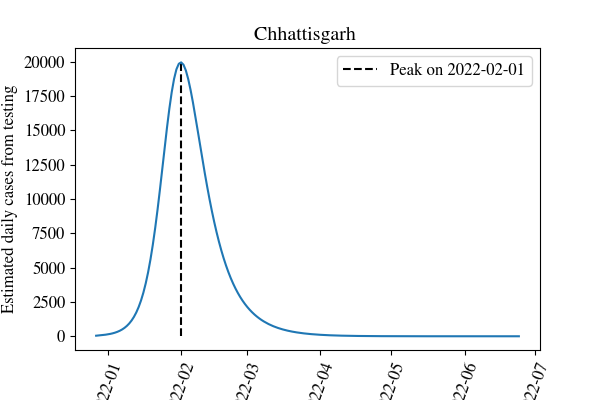
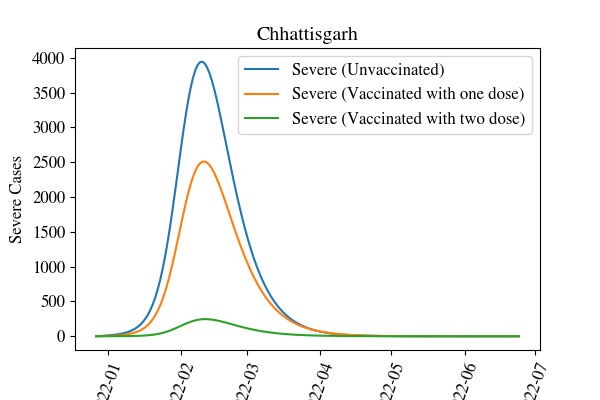
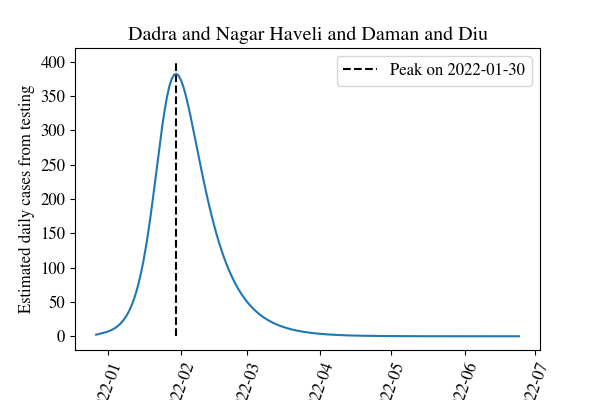
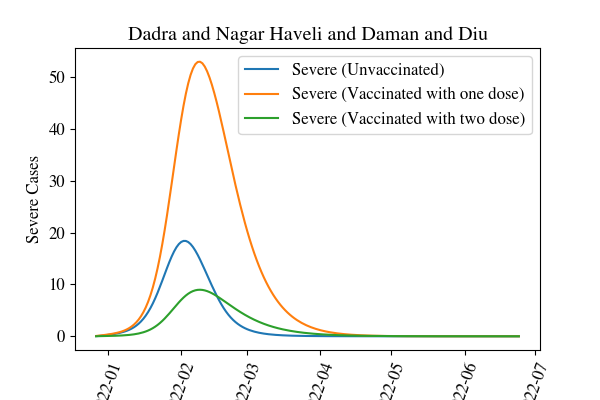
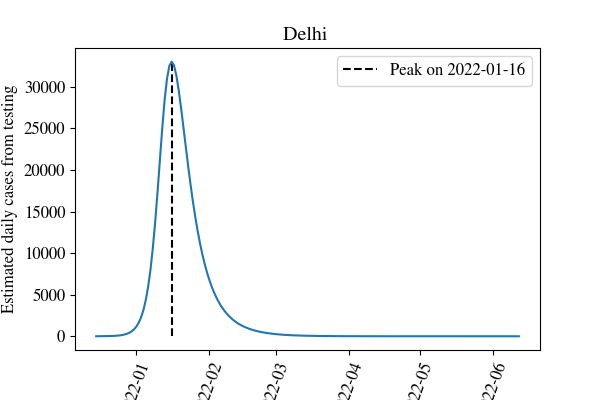
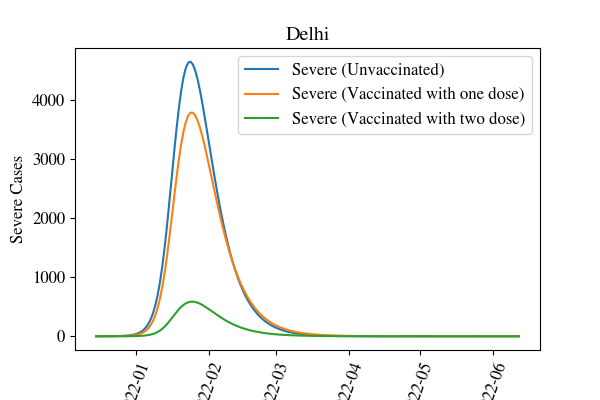
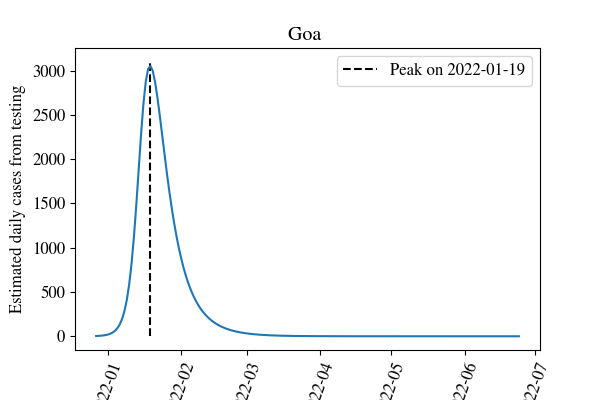
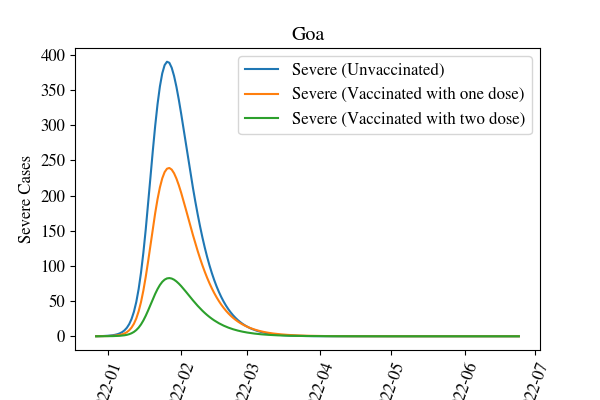
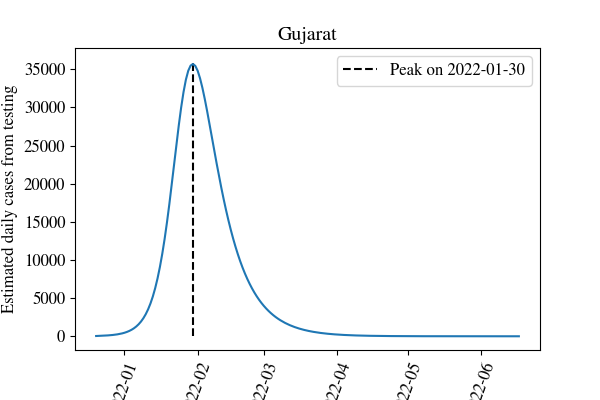
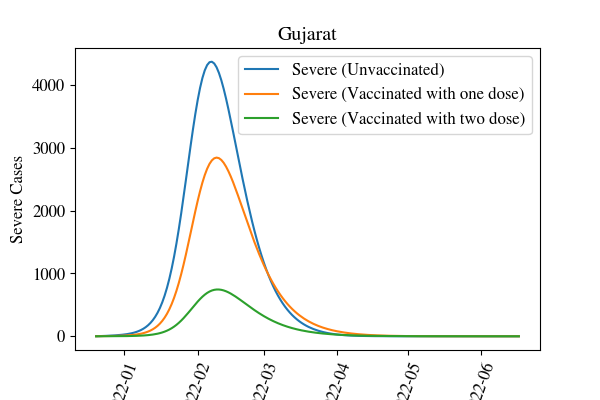
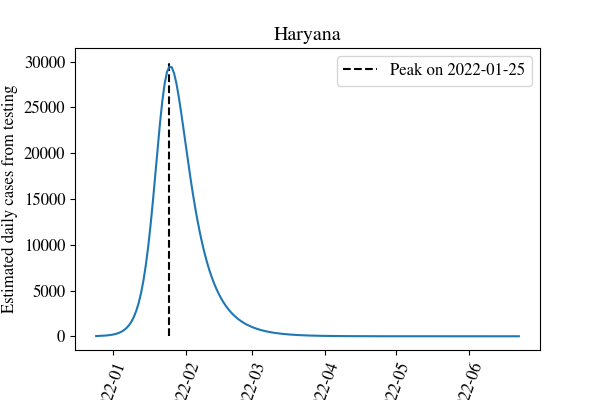
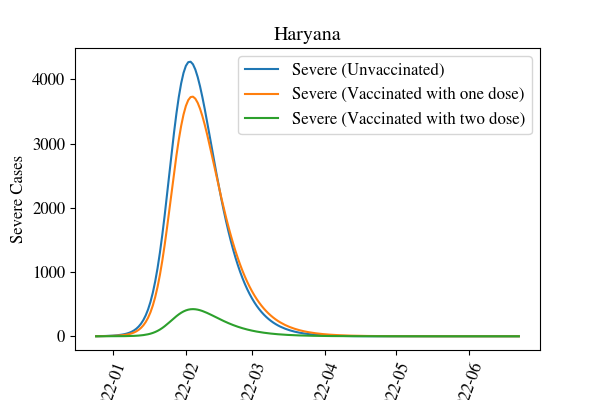
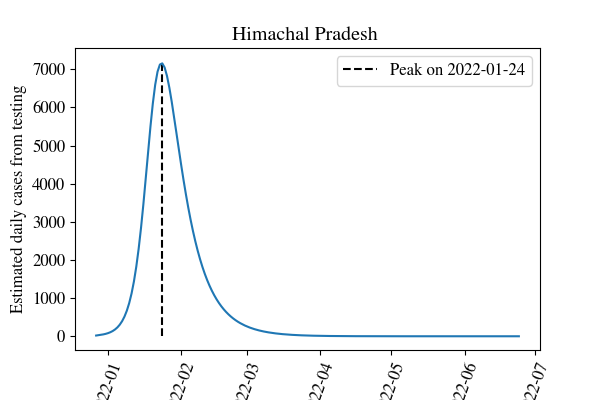
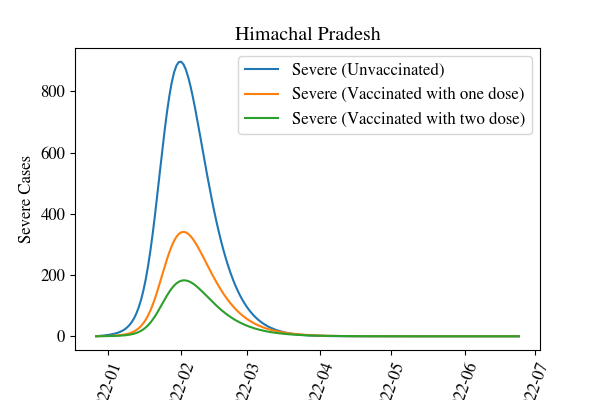
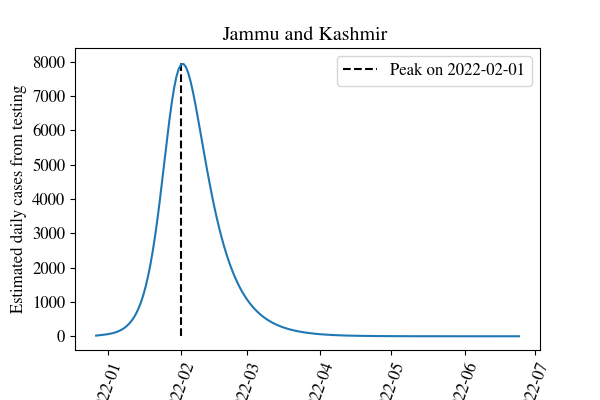
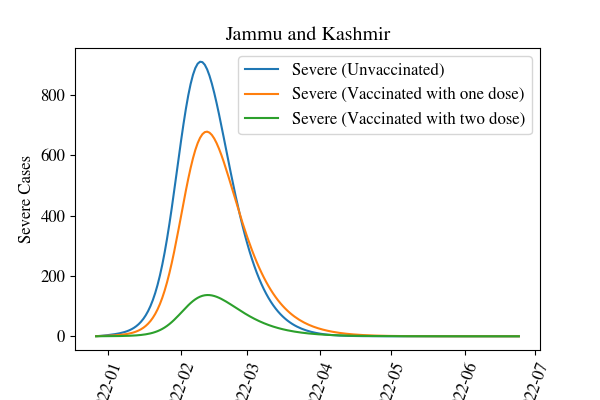
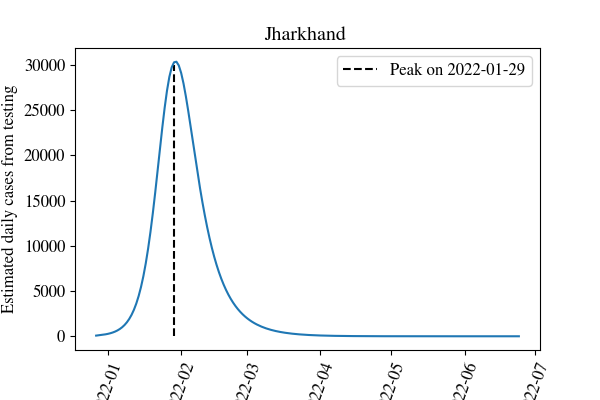
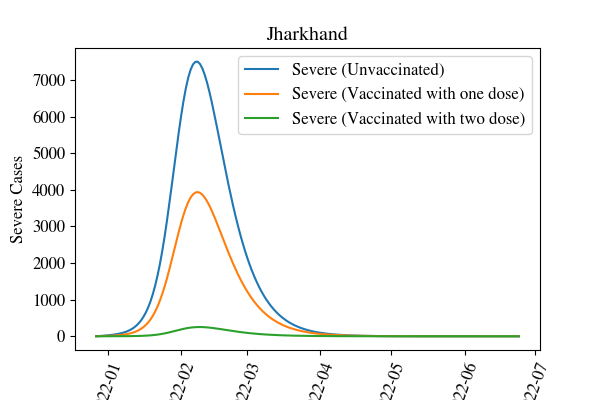
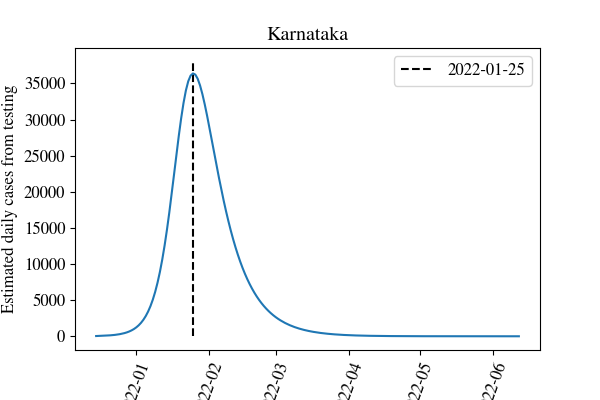
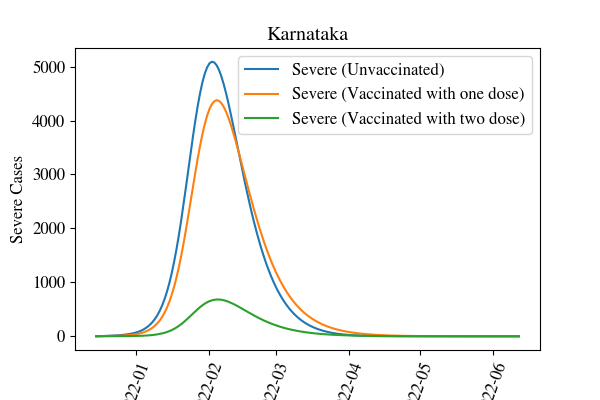
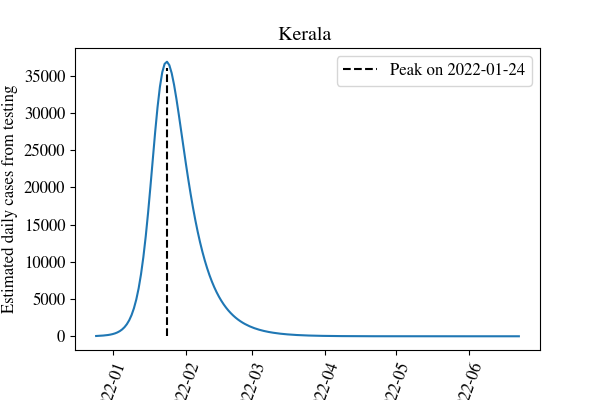
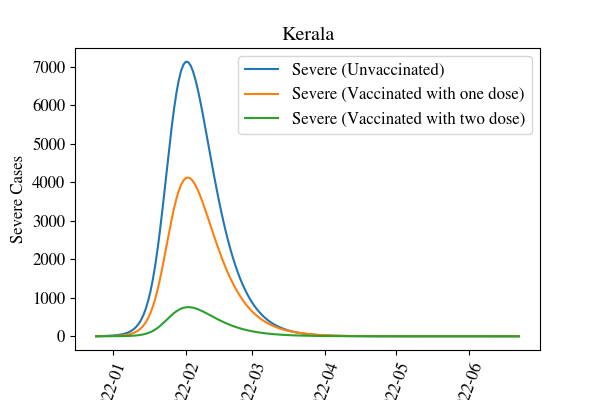
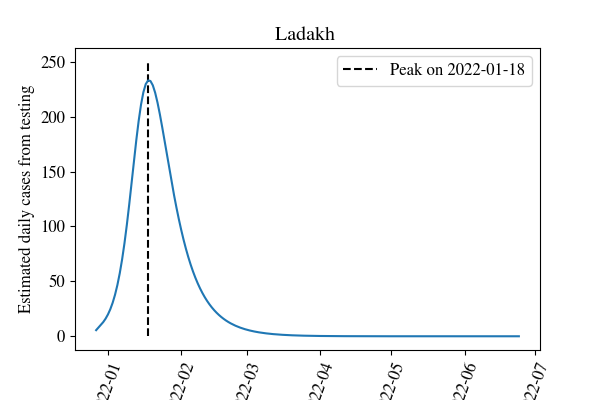
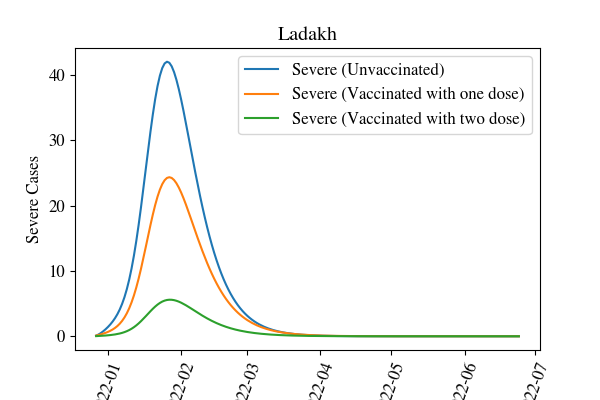
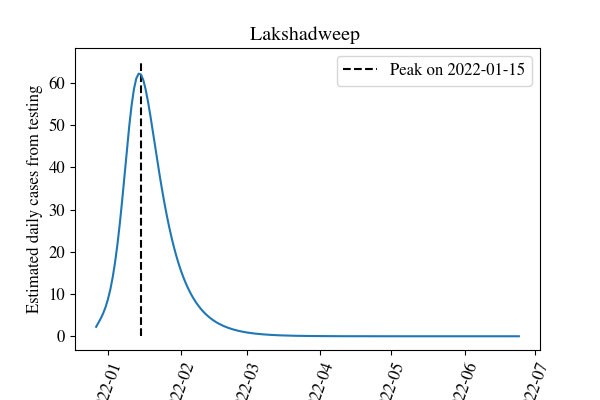
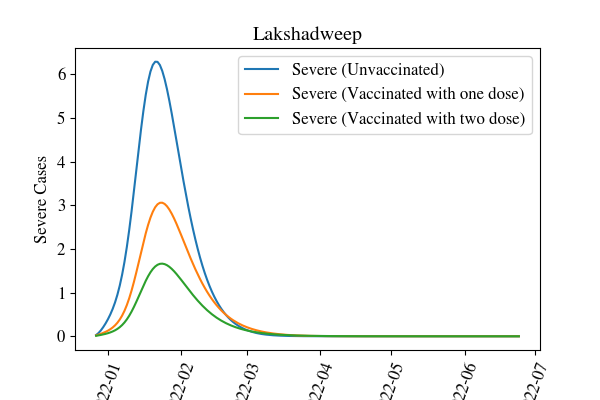
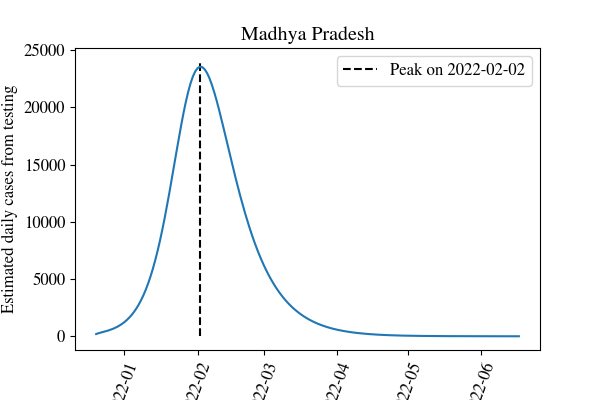
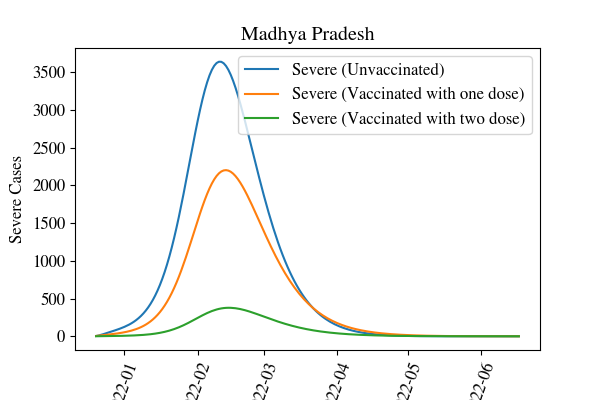
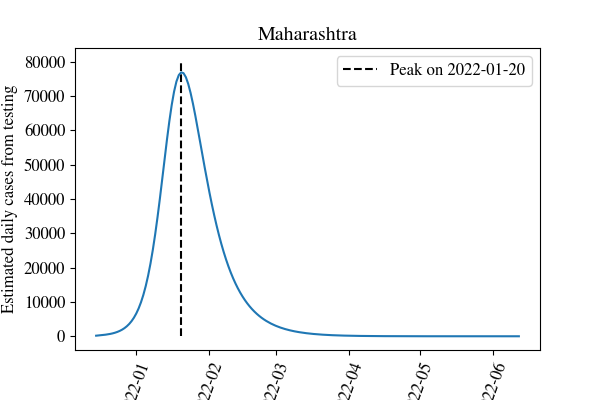
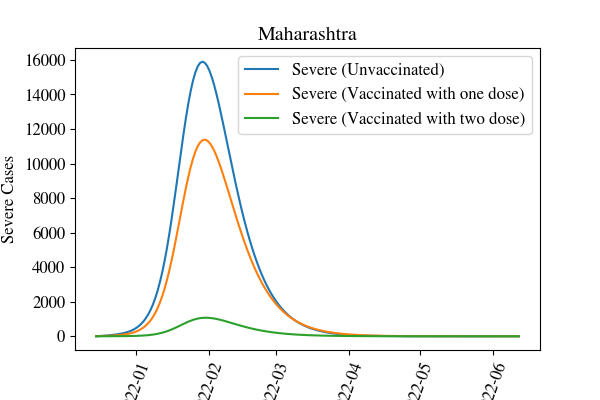
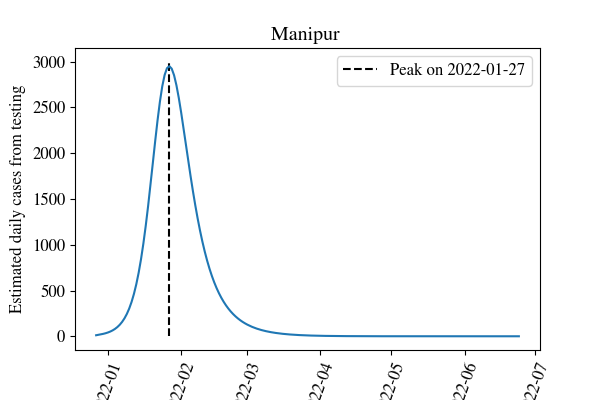
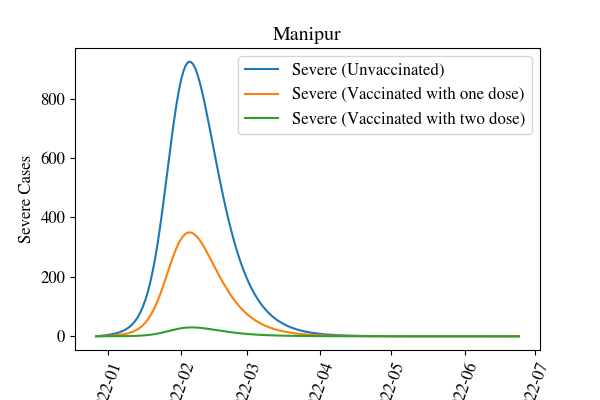
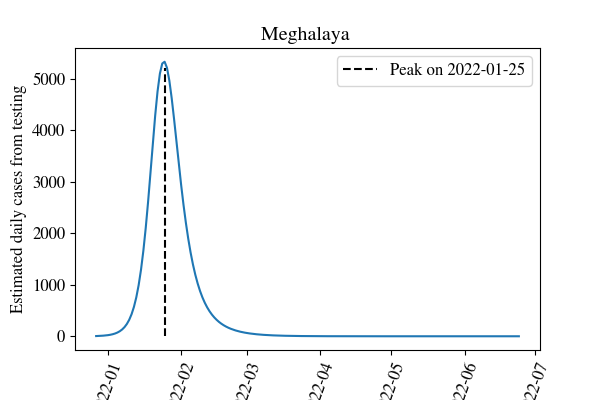
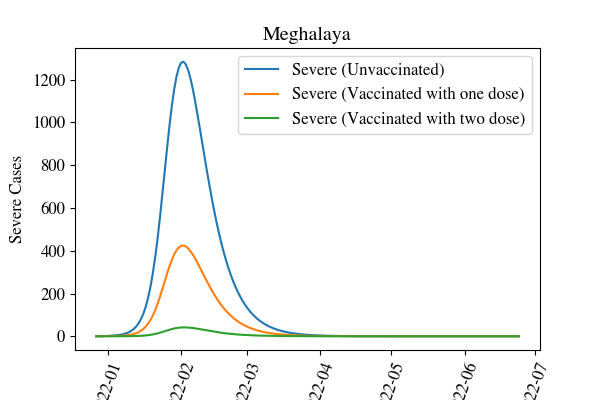
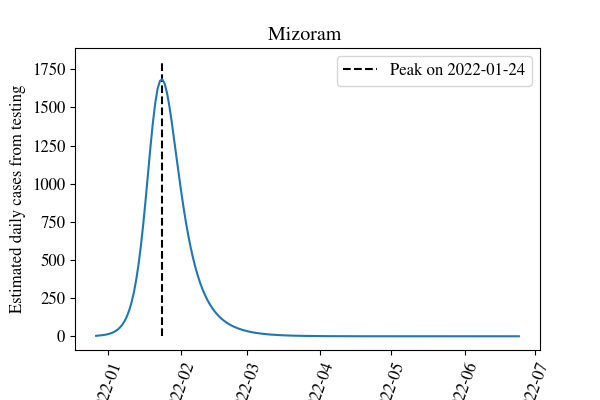
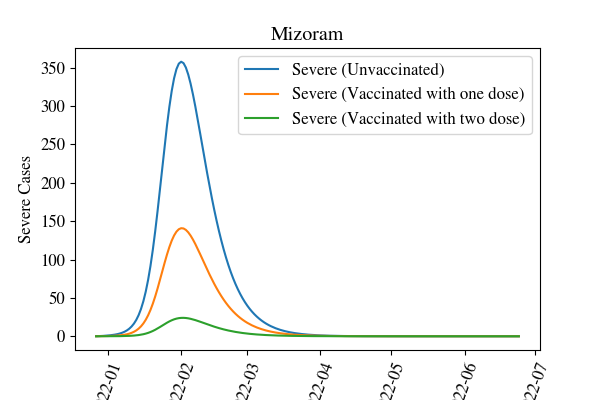
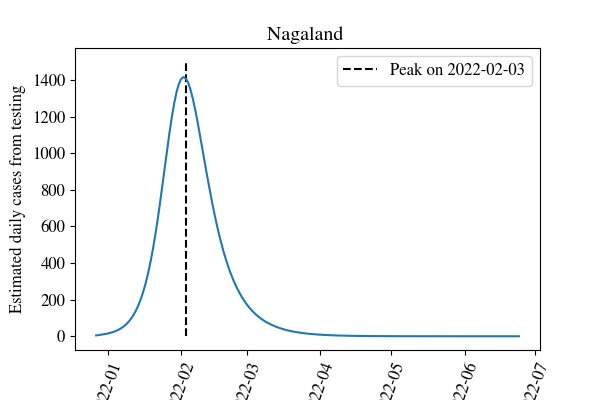
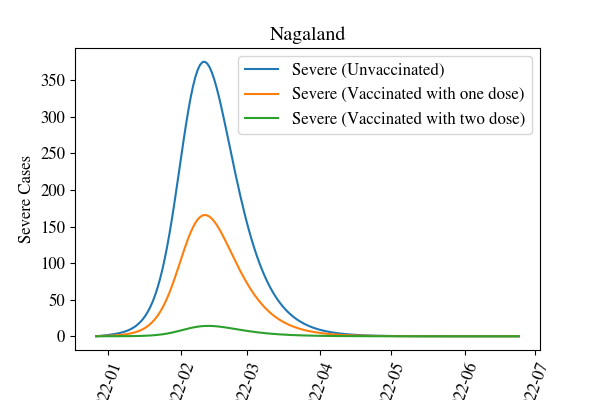
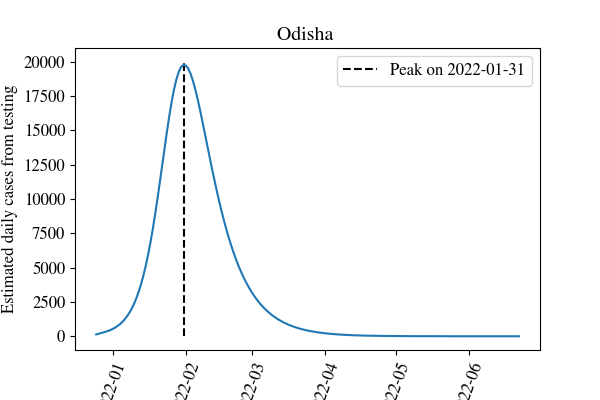
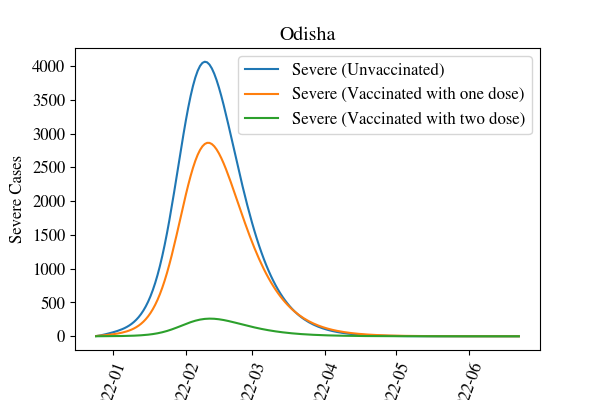
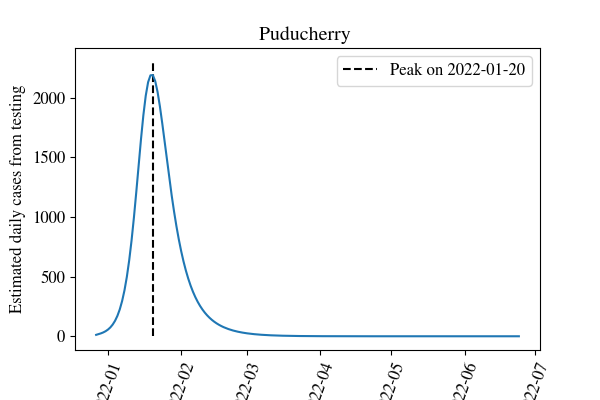
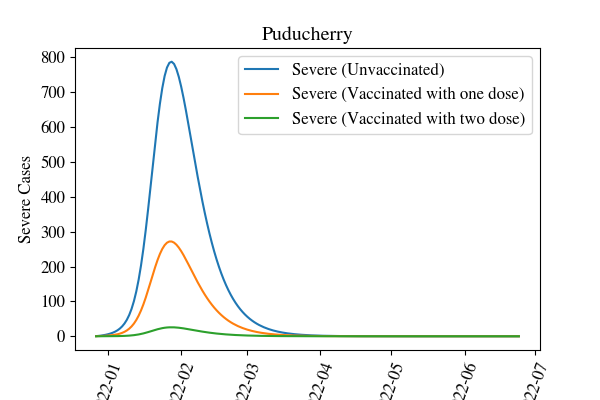
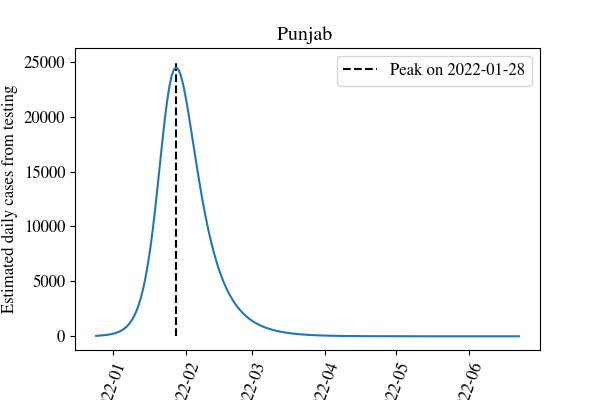
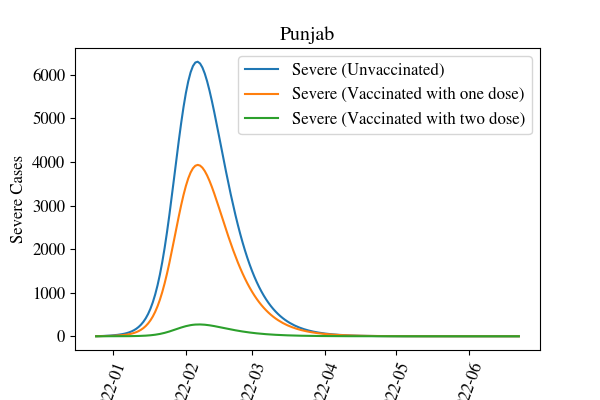
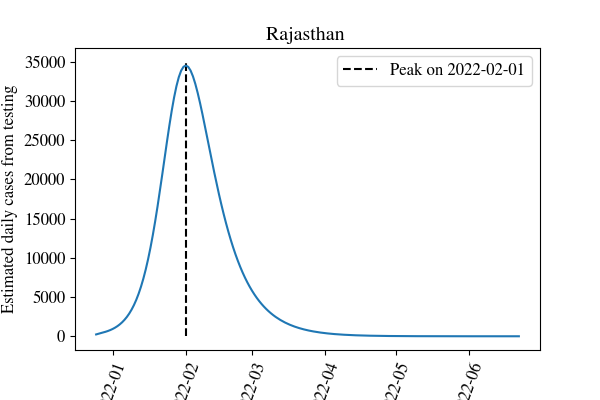
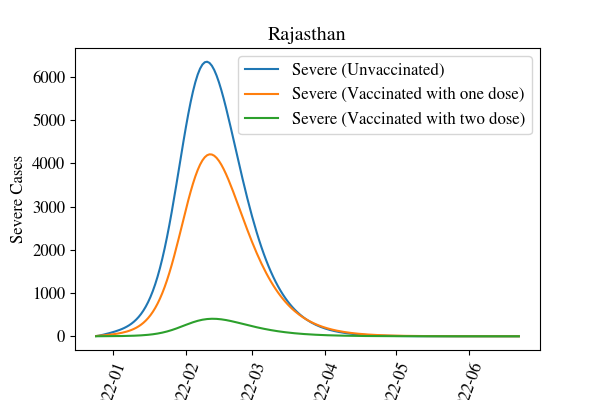
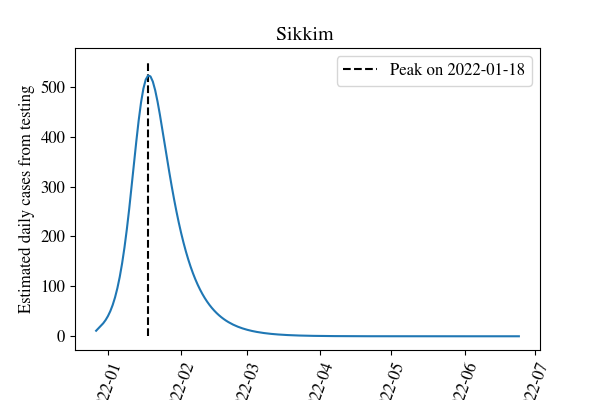
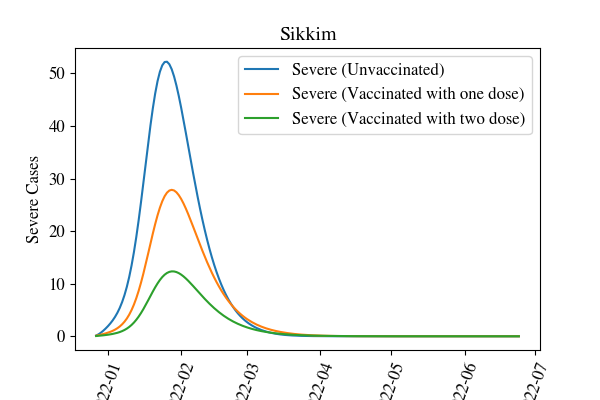
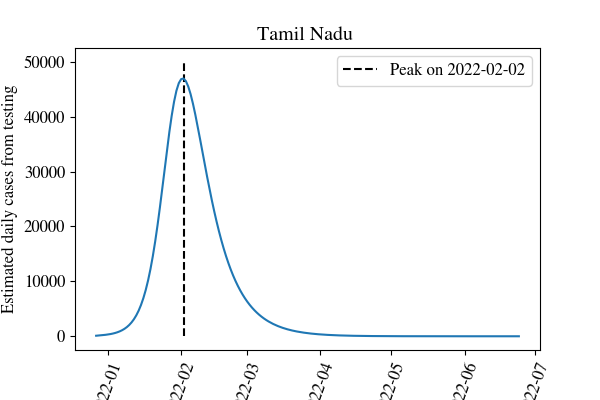
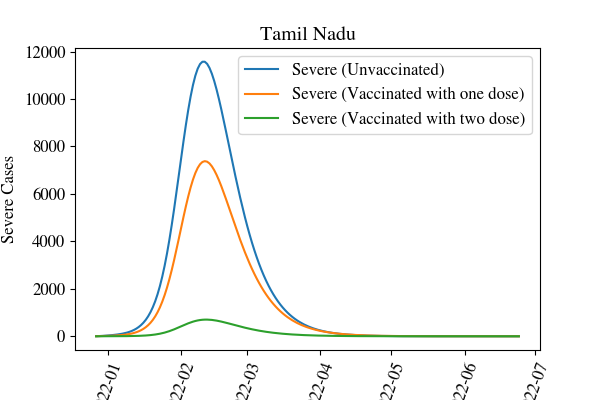
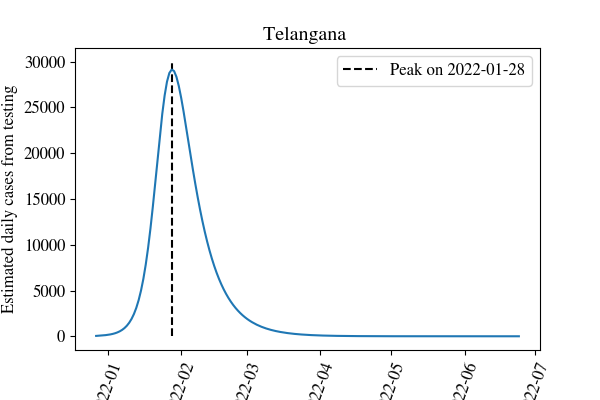
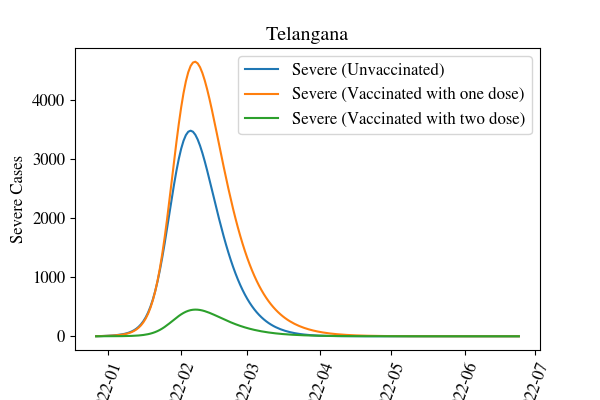

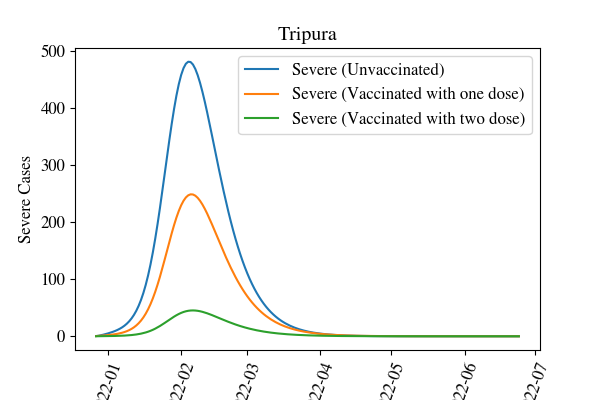
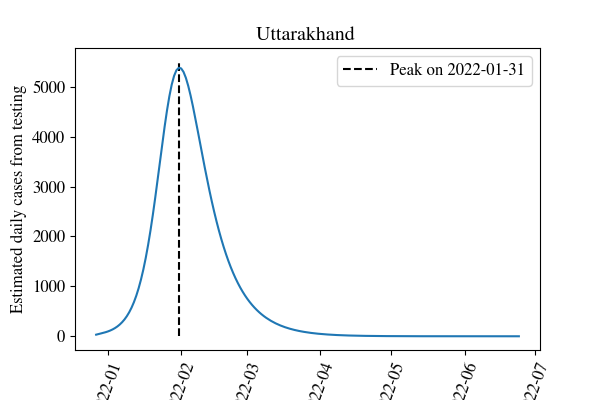
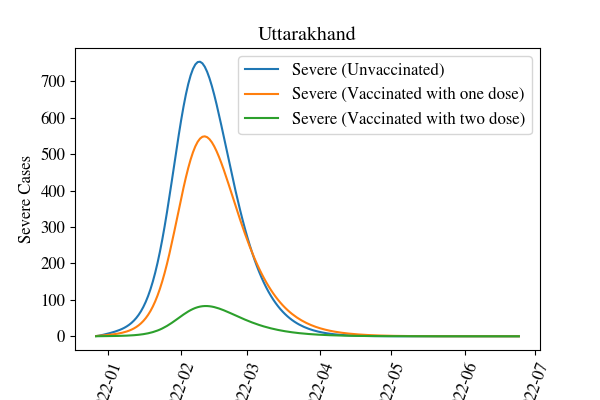
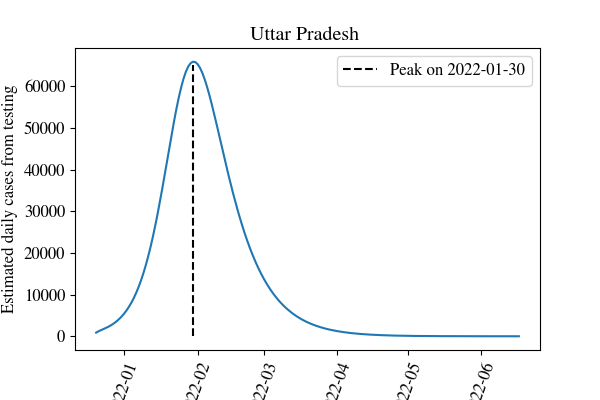
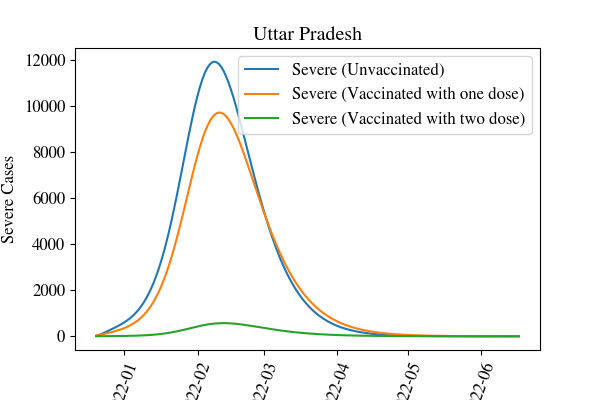
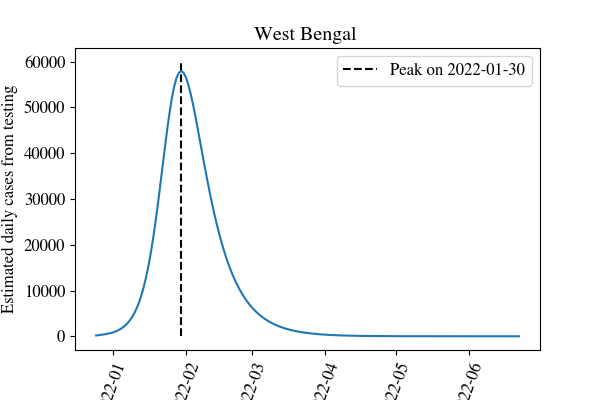
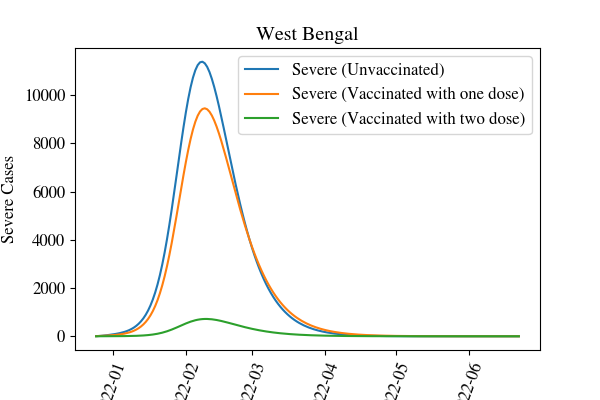
- Andaman_and_Nicobar_estimated_cases.csv
- AndhraPradesh_estimated_cases.csv
- ArunachalPradesh_estimated_cases.csv
- Assam_estimated_cases.csv
- Bihar_estimated_cases.csv
- Chandigarh_estimated_cases.csv
- Chhattisgarh_estimated_cases.csv
- DnHaveli_estimated_cases.csv
- Delhi_estimated_cases.csv
- Goa_estimated_cases.csv
- Gujarat_estimated_cases.csv
- Haryana_estimated_cases.csv
- Himachal_estimated_cases.csv
- India_estimated_cases.csv
- JammuAndKashmir_estimated_cases.csv
- Jharkand_estimated_cases.csv
- Karnataka_estimated_cases.csv
- Kerala_estimated_cases.csv
- Ladakh_estimated_cases.csv
- Lakshwadweep_estimated_cases.csv
- MadhyaPradesh_estimated_cases.csv
- Maharashtra_estimated_cases.csv
- Manipur_estimated_cases.csv
- Meghalaya_estimated_cases.csv
- Mizoram_estimated_cases.csv
- Nagaland_estimated_cases.csv
- Odisha_estimated_cases.csv
- Puducherry_estimated_cases.csv
- Punjab_estimated_cases.csv
- Rajasthan_estimated_cases.csv
- Sikkim_estimated_cases.csv
- TamilNadu_estimated_cases.csv
- Telangana_estimated_cases.csv
- Tripura_estimated_cases.csv
- UP_estimated_cases.csv
- Uttarakhand_estimated_cases.csv
- WestBengal_estimated_cases.csv